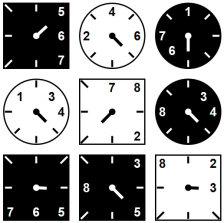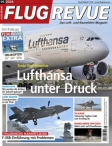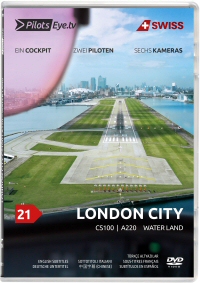PARIS (dpa) - Die französische Pilotengewerkschaft Alter hat den Air France- Besatzungen geraten, Flüge mit Pitotsonden wie am abgestürzten A330-200 abzulehnen. Ein Ausfall der Pitotsonden zählt zu den möglichen Faktoren, die zu dem Unglück auf Flug AF447 geführt haben könnten. Möglicherweise flog der Airbus zu langsam durch eine Gewitterfront.
"Wir rufen nicht zum Boykott der Flugzeuge auf", sagte ein Alter-Sprecher der dpa in Paris am Dienstag. "Wir wollen aber ein Minimum an Sicherheit durchsetzen." Mindestens zwei der drei Sonden je Flugzeug müssten auf dem neuesten Stand sein. Air France hat die Erfüllung dieser Forderung zwischenzeitlich zugesichert.
Bei Air France läuft bereits wegen früherer Vorfälle ein Programm zum Austausch der alten Sonden. Seit mehr als zehn Jahren gebe es Probleme, sagte der Gewerkschaftssprecher. Air France habe bisher 15 der 40 Maschinen der Typen A330 und A340 mit zwei neuen Sonden ausrüsten können. Die Fluggesellschaft hatte zuvor versprochen, schnell jede Maschine mit mindestens einer neuen Sonde auszurüsten.
Hoher Bedarf an neuen Sonden
Der Austausch ist einfach und nicht teuer, doch es mangelt Beobachtern zufolge an Nachschub der Hersteller.
Fehlmessungen der Geschwindigkeit sind nach Airbus-Angaben nicht ungewöhnlich. Für den Fall sind Procedures erstellt und seit langem bekannt gegeben. Die Luftfahrtbehörden und die Europäische Agentur für Flugsicherheit (EASA) sahen bisher in den Fehlmessungen keinen Anlass, auf einen schnelleren Austausch der Messgeräte zu drängen.
Zusammenhang mit Qantas-Notlandung ausgeschlossen
Ein Zusammenhang zwischen dem Air France-Absturz und einem Vorfall mit einem Qantas A330-300 (Reg. VH-QPA) wird unterdessen ausgeschlossen. Flug QF72 von Singapur nach Perth musste am 7. Oktober 2008 nach einer Fehlfunktion des ADIRU I am Flughafen von Learmonth notlanden. Bei einer unvermittelten Änderung der Fluglage waren 115 der 315 Menschen an Bord zum Teil schwer verletzt worden.
"Es gibt zwei Hersteller für Pitotsonden für Airbus-Flugzeuge", sagte ein Qantas-Sprecher gegenüber aero.de. "Wir können bestätigen, dass wir nicht die gleichen Sonden wie Air France einsetzen. Qantas liegen weder vom Hersteller, noch von Airbus oder den Luftfahrtbehörden Anweisungen oder Handlungsempfehlungen zu ihren Pitotsonden vor."
EASA gibt Sicherheitsinformation heraus
Die Europäische Flugsicherheitsbehörde EASA hat am Dienstag vorsorglich eine Sicherheitsinformation an alle Betreiber von Langstreckenflugzeugen herausgegeben. Die EASA weist alle Piloten darauf hin, dass auch bei einem möglichen Ausfall der Geschwindigkeitsmessung die Maschinen sicher geflogen werden können. Es gelte, die entsprechenden Betriebsvorschriften einzuhalten.
Um ein Flugzeug auch nach Ausfall der Geschwindigkeitsmessung manuell sicher fliegen zu können, müssen den Betriebsvorschriften nach der Schub und Anstellwinkel reguliert werden. Der Autopilot schaltet sich bei Ausfall des Geschwindigkeitsmessers ab. Die genaue Geschwindigkeit müssen die Piloten nicht kennen, um ihren Flieger dennoch in der Luft zu halten.
Unter Berufung auf die französische Untersuchungsbehörde BEA bestätigte EASA-Sprecher Daniel Höltgen, dass die Ursache für das Unglück bislang ungeklärt ist. "Dennoch müssen wir alle denkbaren Faktoren in Betracht ziehen." Mit Hochdruck arbeite die Behörde an einer verbindlichen Anweisung für die Flugzeugbetreiber. Dabei gehe es um den möglichen Austausch der Pitotsonden. Gegenwärtig würden alle möglichen Betriebsdaten analysiert.
"Es gab zwar in der Vergangenheit bereits Meldungen über Unregelmäßigkeiten mit den Pitotsonden. Sie wurden bislang jedoch weder von uns, noch von Herstellern als sicherheitskritisch eingestuft", erläuterte EASA-Sprecher Höltgen. Die Lufttüchtigkeitsanweisungen der EASA sind für die europäischen Betreiber verbindlich. Gewöhnlich schließen sich auch die weltweiten Flugsicherheitsbehörden, darunter die US-amerikanische FAA, den Anweisungen an.
Airbus-Flugzeuge verfügen an der über drei externe Geschwindigkeitsmesser. Sie werden von unterschiedlichen Unternehmen hergestellt. Bei der abgestürzten Air France-Maschine waren Pitotsonden der Firma Thales aus der Baureihe AA angebracht. Eine mögliche Sicherheitsmaßnahme könnte nach den Worten von Höltgen ein Austausch von Geräten dieses Typs an anderen Maschinen gegen die modernere Baureihe BA sein.
Umfangreiches Verfahren
Nicht geklärt sei bis heute, ob nicht auch Sonden des Herstellers Rosemount betroffen sein könnten und in welchem Umfang und Zeitraum modernere Varianten verfügbar seien.
Die Auswertungen der Betriebsdaten seien, betonte Höltgen, ein sehr umfangreiches Verfahren. "Gegenwärtig fließen ständig neue Informationen über die Sonden ein. Das ist der Grund, weshalb nicht sofort eine Anweisung gegeben werden kann. Präzision geht vor Schnelligkeit." Schließlich seien unabhängig von den laufenden Prüfungen alle zugelassenen Maschinen betriebstauglich und sicher.
© dpa, aero.de | Abb.: Air France-KLM | 09.06.2009 11:19
Um einen Kommentar schreiben zu können, müssen Sie sich bei aero.de
registrieren oder
einloggen.
Beitrag vom 09.06.2009 - 20:21 Uhr
Are you able to show the correct messages?
For example EFCS had failures on SYS1 AND 2!
Thanks
Beitrag vom 09.06.2009 - 19:58 Uhr
I think it's great time to review all that we know about that flight.
THE HISTORY AS WE KNOW SO FAR
The AF 330-200 left Rio de Janeiro for Paris, with 228 souls on board and the flight plan would take it into Brazilian oceanic airspace.
Flew out of radar range in the direction of the ITCZ and last communication gave an ETA for position TASIL at which he never reported.
in some communication with AF services, the crew reported "forte turbulence", a non-technical term meaning above moderate but quite not severe a turbulence.
Then in the lapse of four minutes, a set of 24 technical messages were received on AF maintenace services telex.
Then silence.
Five days later, debris and human bodies were found by search/rescue teams at a position close to the assumed last telex transmission.
The airplane left Rio at/or close to maximum takeoff weight.
Some passegers were refused boarding , and survived.
2/ THE ACARS MESSAGES
There seems to be a common thought that these were the only data transmitted by the airplane, but it certainly is not the case : they only concern the messages sent by the airborne maintenamce computer to the maintenance department of the airline.
Missing are in a likely order : the initiation message / the electronic loadsheet / the out and off messages, meaning the off-chocks and takeoff times / a set of wx requests for en-route alternates and finally some communications with dispatch, all with different addresses and not mentioned on the maintenance summary telex. On the other hand, these messages should have a trace in the company OPS telex.
These maintenace messages are not equivalent to a recording on the FDR : they only state that at such and such time, a warning - WRN - was displayed on the ECAM screen, or that at such and such time, an advisory message was announced and the coding used derives from a standardised ATA list, with a coding going deep into the origin of the warning but not available to anyone outside the technical departments of AF or Airbus as we can only see the chapter and item (the sub item coding is hidden)
This coding is similar to this (thanks to Mandala469 :
"
WRN/WN is Warning, FLR/FR is Failure Report.
34-22-25 - INDICATOR - ISIS (INTEGRATED STANDBY INSTRUMENT SYSTEM)
34-43-00 - TRAFFIC AND TERRAIN COLLISION AVOIDANCE SYSTEM
34-12-00 - AIR DATA/INERTIAL REFERENCE SYSTEM (ADIRS) ((ADIRU & CDU))
34-10-00 - AIR DATA/INERTIAL REFERENCE SYSTEM (ADIRS)
27-90-00 - ELECTRICAL FLIGHT CONTROL SYSTEM (EFCS)
22-83-34 - FMGEC (FLIGHT MANAGEMENT, GUIDANCE AND ENVELOPE COMPUTER)
22-62-00 - FLIGHT ENVELOPE COMPUTATION
22-30-00 %u2013 AUTOTHRUST
27-23-00 - RUDDER AND PEDAL TRAVEL LIMITING ACTUATION
27-93-00 - FLIGHT CONTROL PRIMARY COMPUTER (FCPC)
34-11-15 - PROBE %u2013 PITOT
27-93-34 - FCPC (FLIGHT CONTROL PRIMARY COMPUTER)
21-31-00 - PRESSURE CONTROL AND MONITORING
27-91-00 - OPERATIONAL CONFIGURATION (F/Ctl Altn law)
"
In these ACARS messages, there is a clear pattern of erroneous data transmitted by the ADC - air data computers - to the flight instruments, the auto pilot and auto-thrust,the flight controls and the environment control.
AF and the BEA seem to have some information pointing at faulty dynamic pressure sensing and there is a deffinite finger pointing at the pitot tubes.
3/ THE COFFIN CORNER
A lot has been said about it, but let's put things in perspective :
Assuming a departure at max takeoff weight, the weight of the aircraft at the last transmission moment was around 210,000kg.
A quick look at the FCOM reveals that the optimum altitude would have been 36,200 ft and the max Alt 37,500 ft, give or take a few..
A lot of uninformed rubbish has been said on this forum about it : Jet upset, stall, Mach stall, flat spin...etc...
The reality is that, as usual, things are a lot more complicated : the computation of max alt depends on weight, temperature, regulatory limitations. Before giving the gist of it, let's make one thing clear : the coffin corner is the domain of test pilots and no airliner is ever going to go there by choice, as at the very least, the highest altitude will give the crew a 1.3 G margin over the raw speeds associated with the lift ceiling.
So, to sum up, these are the elements used for Max Alt computations : (Quote)
"As a result, the maximum recommended altitude indicated by the FMGS,
depending on aircraft weight and temperature conditions, is the lowest of the:
%u2022 Maximum certified altitude,
%u2022 Maximum cruise altitude,
%u2022 1.3g buffet limited altitude,
%u2022 Climb ceiling ."(Unquote)
4/ THE VERTICAL FIN
I'm afraid nothing could honestly be derived from its observation.
Quite a few have been discovered on crashed airplanes as apparently intact as this one : the latest being the NZ 320 (a high speed dive into the sea ) off the coast of Perpignan, to which one could add the instances at Sotchi, the Birgenair 757...etc...
Those who think of a rudder influence should also add to their lists the instances of rudder hard-overs that the 737 fleet had experienced, instances which didn't show any rudder or fin detachment or in-flight break-up.
5/ THE PITOT TUBES MYSTERY
If there is a place where the word "mystery" applies, it is on that very subject : They are built by several well-known companies, designed and built and performing to the same stringent specifications and used by all manufacturers,, yet the problem only happens on Airbus aircraft.
Despite the certification tests, is there something different with those airplanes? is their aerodynamic field so diofferent from, say, a 777 ?. Has any other aircraft model, whatever the make, experienced similar occurrences ?....
6/ SO WHAT'S LEFT ?
Factually, not a lot... yet.
I'm sure that soon the first forensic examinations will bring some new facts, and so will the expert examination of the debris.
And then, retrieving the FDR and CVR ...
Contrail designer
USER PROFILE SEND INSTANT MSG ADD TO RESP MEMBERS SUGGEST DELETION QUOTE SELECTED TEXT _
413X3 From United States, joined Jul 2008, 522 posts, RR: 0
Reply 10, posted Tue Jun 9 2009 18:48:55 your local time (1 hour 2 minutes ago) and read 2241 times:









Kommentare (2) Zur Startseite
Um einen Kommentar schreiben zu können, müssen Sie sich bei aero.de registrieren oder einloggen.
For example EFCS had failures on SYS1 AND 2!
Thanks
THE HISTORY AS WE KNOW SO FAR
The AF 330-200 left Rio de Janeiro for Paris, with 228 souls on board and the flight plan would take it into Brazilian oceanic airspace.
Flew out of radar range in the direction of the ITCZ and last communication gave an ETA for position TASIL at which he never reported.
in some communication with AF services, the crew reported "forte turbulence", a non-technical term meaning above moderate but quite not severe a turbulence.
Then in the lapse of four minutes, a set of 24 technical messages were received on AF maintenace services telex.
Then silence.
Five days later, debris and human bodies were found by search/rescue teams at a position close to the assumed last telex transmission.
The airplane left Rio at/or close to maximum takeoff weight.
Some passegers were refused boarding , and survived.
2/ THE ACARS MESSAGES
There seems to be a common thought that these were the only data transmitted by the airplane, but it certainly is not the case : they only concern the messages sent by the airborne maintenamce computer to the maintenance department of the airline.
Missing are in a likely order : the initiation message / the electronic loadsheet / the out and off messages, meaning the off-chocks and takeoff times / a set of wx requests for en-route alternates and finally some communications with dispatch, all with different addresses and not mentioned on the maintenance summary telex. On the other hand, these messages should have a trace in the company OPS telex.
These maintenace messages are not equivalent to a recording on the FDR : they only state that at such and such time, a warning - WRN - was displayed on the ECAM screen, or that at such and such time, an advisory message was announced and the coding used derives from a standardised ATA list, with a coding going deep into the origin of the warning but not available to anyone outside the technical departments of AF or Airbus as we can only see the chapter and item (the sub item coding is hidden)
This coding is similar to this (thanks to Mandala469 :
"
WRN/WN is Warning, FLR/FR is Failure Report.
34-22-25 - INDICATOR - ISIS (INTEGRATED STANDBY INSTRUMENT SYSTEM)
34-43-00 - TRAFFIC AND TERRAIN COLLISION AVOIDANCE SYSTEM
34-12-00 - AIR DATA/INERTIAL REFERENCE SYSTEM (ADIRS) ((ADIRU & CDU))
34-10-00 - AIR DATA/INERTIAL REFERENCE SYSTEM (ADIRS)
27-90-00 - ELECTRICAL FLIGHT CONTROL SYSTEM (EFCS)
22-83-34 - FMGEC (FLIGHT MANAGEMENT, GUIDANCE AND ENVELOPE COMPUTER)
22-62-00 - FLIGHT ENVELOPE COMPUTATION
22-30-00 %u2013 AUTOTHRUST
27-23-00 - RUDDER AND PEDAL TRAVEL LIMITING ACTUATION
27-93-00 - FLIGHT CONTROL PRIMARY COMPUTER (FCPC)
34-11-15 - PROBE %u2013 PITOT
27-93-34 - FCPC (FLIGHT CONTROL PRIMARY COMPUTER)
21-31-00 - PRESSURE CONTROL AND MONITORING
27-91-00 - OPERATIONAL CONFIGURATION (F/Ctl Altn law)
"
In these ACARS messages, there is a clear pattern of erroneous data transmitted by the ADC - air data computers - to the flight instruments, the auto pilot and auto-thrust,the flight controls and the environment control.
AF and the BEA seem to have some information pointing at faulty dynamic pressure sensing and there is a deffinite finger pointing at the pitot tubes.
3/ THE COFFIN CORNER
A lot has been said about it, but let's put things in perspective :
Assuming a departure at max takeoff weight, the weight of the aircraft at the last transmission moment was around 210,000kg.
A quick look at the FCOM reveals that the optimum altitude would have been 36,200 ft and the max Alt 37,500 ft, give or take a few..
A lot of uninformed rubbish has been said on this forum about it : Jet upset, stall, Mach stall, flat spin...etc...
The reality is that, as usual, things are a lot more complicated : the computation of max alt depends on weight, temperature, regulatory limitations. Before giving the gist of it, let's make one thing clear : the coffin corner is the domain of test pilots and no airliner is ever going to go there by choice, as at the very least, the highest altitude will give the crew a 1.3 G margin over the raw speeds associated with the lift ceiling.
So, to sum up, these are the elements used for Max Alt computations : (Quote)
"As a result, the maximum recommended altitude indicated by the FMGS,
depending on aircraft weight and temperature conditions, is the lowest of the:
%u2022 Maximum certified altitude,
%u2022 Maximum cruise altitude,
%u2022 1.3g buffet limited altitude,
%u2022 Climb ceiling ."(Unquote)
4/ THE VERTICAL FIN
I'm afraid nothing could honestly be derived from its observation.
Quite a few have been discovered on crashed airplanes as apparently intact as this one : the latest being the NZ 320 (a high speed dive into the sea ) off the coast of Perpignan, to which one could add the instances at Sotchi, the Birgenair 757...etc...
Those who think of a rudder influence should also add to their lists the instances of rudder hard-overs that the 737 fleet had experienced, instances which didn't show any rudder or fin detachment or in-flight break-up.
5/ THE PITOT TUBES MYSTERY
If there is a place where the word "mystery" applies, it is on that very subject : They are built by several well-known companies, designed and built and performing to the same stringent specifications and used by all manufacturers,, yet the problem only happens on Airbus aircraft.
Despite the certification tests, is there something different with those airplanes? is their aerodynamic field so diofferent from, say, a 777 ?. Has any other aircraft model, whatever the make, experienced similar occurrences ?....
6/ SO WHAT'S LEFT ?
Factually, not a lot... yet.
I'm sure that soon the first forensic examinations will bring some new facts, and so will the expert examination of the debris.
And then, retrieving the FDR and CVR ...
Contrail designer
USER PROFILE SEND INSTANT MSG ADD TO RESP MEMBERS SUGGEST DELETION QUOTE SELECTED TEXT _
413X3 From United States, joined Jul 2008, 522 posts, RR: 0
Reply 10, posted Tue Jun 9 2009 18:48:55 your local time (1 hour 2 minutes ago) and read 2241 times: